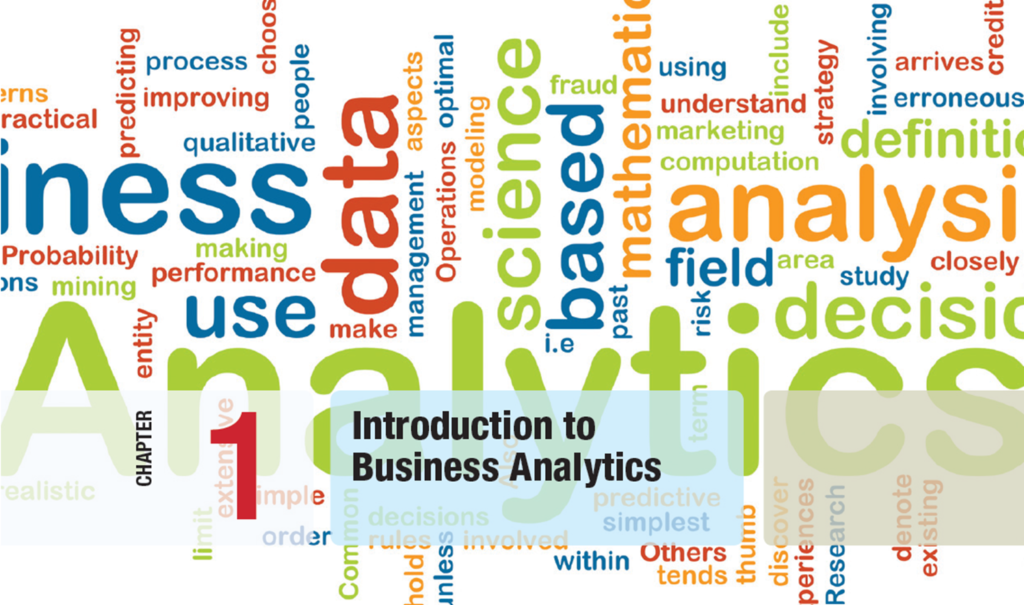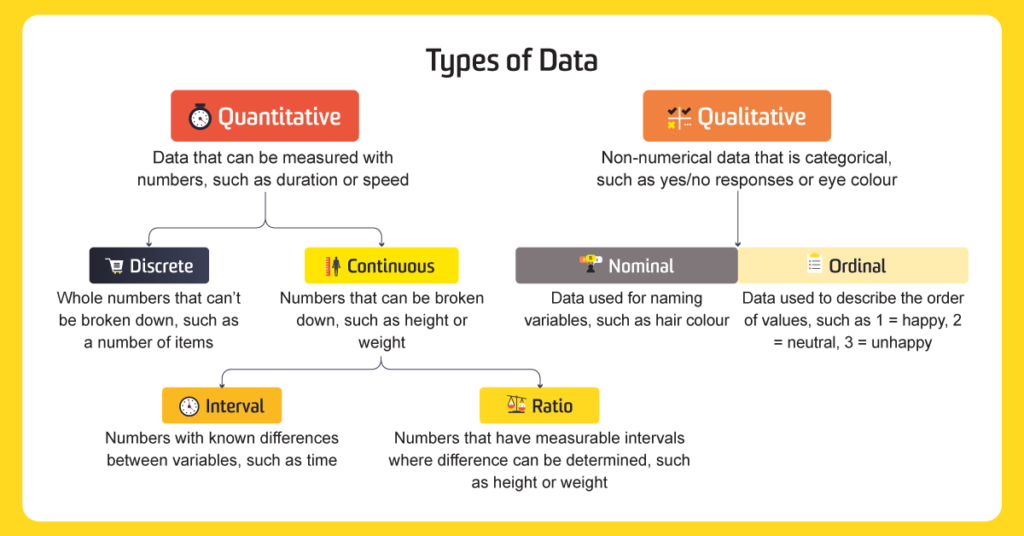Introduction to Business analytics.

Analytics is the use of:data, information technology,statistical analysis,quantitative methods, an mathematical or computer-based model to help managers gain improved insight about their business operations an make better, fact-based decisions.
Importance of Business Analytics There is a strong relationship of BA with:- profitability of businesses – revenue of businesses BA enhances understanding of data BA is vital for businesses to remain competitive BA enables creation of informative reports.
1Scope of Business Analytics.
}Descriptive analytics
– uses data to understand past and present
}Predictive analytics
– analyzes past performance
}Prescriptive analytics
– uses optimization techniques.
Example 1.1 Retail Markdown Decisions
}Most department stores clear seasonal inventory by reducing prices.
The question is:When to reduce the price and by how much?
}Descriptive analytics: examine historical data for similar products (prices, units sold, advertising, …)
}Predictive analytics: predict sales based on price
}Prescriptive analytics: find the best sets of pricing and advertising to maximize sales revenue,
Analytics in Practice:
Harrah’s Entertainment
Harrah’s owns numerous hotels and casinos
Uses analytics to:- forecast demand for rooms- segment customers by gaming activities
Uses prescriptive models to: – set room rates- allocate rooms- offer perks and rewards to customers,
DATA – collected facts and figures
DATABASE – collection of computer files containing data
INFORMATION– comes from analyzing data,
Examples of using DATA in business:
Annual reports
Accounting audits
Financial profitability analysis
Economic trends
Marketing research
Operations management performance
Human resource measurements
Metrics are used to quantify performance.
Measures are numerical values of metrics.
Discrete metrics involve counting- on time or not on time- number or proportion of on time deliveries Continuous metrics are measured on a continuum – delivery time – package weight- purchase price,
Categorical (nominal) Data
Data placed in categories according to a specified characteristic Categories bear no quantitative relationship to one another
Examples:- customer’s location (America, Europe, Asia)- employee classification (manager, supervisor, associate)
Ordinal Data,
Data that is ranked or ordered according to some relationship with one another No fixed units of measurement Examples – college football rankings- survey responses (poor, average, good, very good, excellent
Interval Data
Ordinal data but with constant differences between observations No true zero point Ratios are not meaningful
Examples:- temperature readings- SAT scores
Ratio Data
Continuous values and have a natural zero point Ratios are meaningful
Examples:- monthly sales- delivery times
Problem Solving and Decision Making,
BA represents only a portion of the overall problem solving and decision making process.
Six steps in the problem solving process
1. Recognizing the problem
2. Defining the problem
3. Structuring the problem
4. Analyzing the problem
5. Interpreting results and making a decision
6. Implementing the solution
1. Recognizing the Problem
Problems exist when there is a gap between what is happening and what we think should be happening.For example, costs are too high compared with competitors.
2. Defining the Problem
Clearly defining the problem is not a trivial task.Complexity increases when the following occur:- large number of courses of action- several competing objectives- external groups are affected- problem owner and problem solver are not the same person- time constraints exist,
3.Structuring the Problem
Stating goals and objectives Characterizing the possible decisions Identifying any constraints or restrictions.
4. Analyzing the Problem
Identifying and applying appropriate Business Analytics techniques Typically involves experimentation, statistical analysis, or a solution process Much of this course is devoted to learning BA techniques for use in Step 4.



